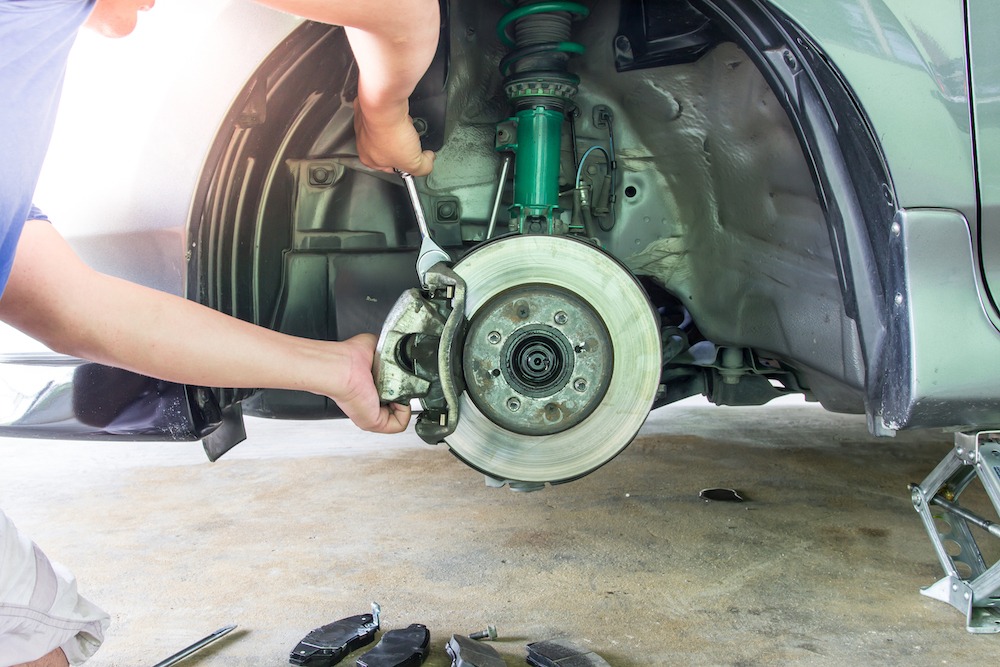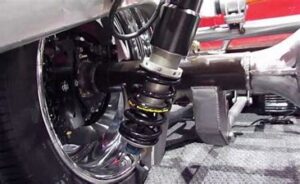The braking system is one of the most important components of our cars when it comes to keeping them operating smoothly and safely. Brake callipers, which press the brake pads on the braking discs to bring your car to a stop, are one of its most important parts. Brake callipers, like all other car parts, aren’t indestructible and may eventually need to be replaced.
A common query from drivers is, “How much to replace brake callipers?” For drivers who are concerned about their budget, it is crucial to comprehend the aspects that affect the cost. You can plan and make wise decisions regarding car maintenance by being aware of the possible costs associated with replacing your brake callipers, whether they are the result of corrosion, wear and tear, or unanticipated problems.
This post will explore the topic of brake calliper replacement costs, dissecting the variables that affect the price and providing advice on how to plan and budget for this crucial auto maintenance item. So let’s investigate brake callipers, solve the riddle of replacement expenses, and make sure your driving experience is safe and economical.
Table of Contents
Understanding The Brake Callipers In A Car
Brake callipers are a key component in the complex dance of auto parts that guarantees our cars stop safely. Think of them as the clamp-like mechanisms that engage the brakes to bring your car to a stop. The summary is as follows: The brake discs, sometimes referred to as rotors, that are mounted on the wheels are grabbed by the brake callipers when you apply the brakes. Consider this to be a firm hug. This embrace generates friction, which slows down the wheels’ and your car’s, spin. The brake pads are currently housed within the brake calipers itself. When you brake, these pads work like unsung heroes by pressing against the brake discs to create the friction that brings your automobile to a stop.

The brake pads offer the required friction, while the callipers give the grip in this dynamic collaboration scenario. Brake callipers may experience wear and tear over time as a result of normal use, weather conditions, or unanticipated problems. “Do they need replacing?” is the inquiry that emerges when this occurs. To fully appreciate the essential role brake callipers play in the safety and operation of your car’s braking system, it is important to comprehend its significance. Thus, when you hear about replacing your brake callipers, you are essentially guaranteeing that this vital part remains in excellent shape, adding to the dependability and security of your car.
Common Causes Of The Brake Calipers Replacement In A Car
Before we delve into How much to replace brake callipers. Firstly, we’ll see its common causes and fixes in detail. To ensure that you can stop safely, brake callipers are an essential part of your car’s braking system. But just like any other component of your car, they could have problems and need to be replaced. Maintaining an efficient and dependable braking system requires an understanding of the typical reasons why brake callipers need to be replaced.
1. Wear And Tear:
The normal wear and tear that happens over time is one of the main causes of brake calliper replacement. The friction and heat generated by using the brakes cause the brake pads and callipers to gradually deteriorate with each application. The performance of the calliper may eventually be impacted by this wear, requiring a replacement.
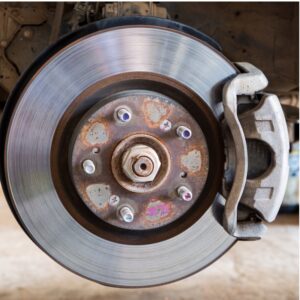
2. Rusting & Corrosion:
Weather exposure, particularly in areas with severe weather patterns, can cause rust and corrosion on the callipers. Not only do corroded callipers have an ugly appearance, but they also become less useful. Because rust erodes the metal, the calliper can’t put equal pressure on the braking discs and pads, necessitating replacement.
3. Breach Fluid Pollution:
The braking system’s correct operation depends on the presence of brake fluid. On the other hand, calliper issues may arise if the braking fluid gets tainted by moisture or debris. Fluid contamination can lead to internal calliper corrosion, which can damage hydraulic parts and eventually necessitate replacement.
4. Unequal Wear On Brake Pads:
Uneven wear of the brake pads might cause uneven pressure on the calliper. Due to this imbalance, one side of the calliper may experience greater stress than the other, which could cause early wear and damage. This problem can be avoided and the life of your calipers can be increased by routinely inspecting and replacing the brake pads.
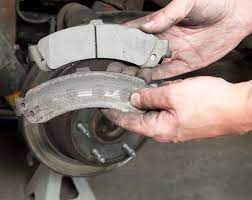
5. Collisions And Accidents:
Accidents or incidents can sometimes cause damage to the brake callipers. The deterioration may have an impact on the caliper’s structural integrity and functionality even if it isn’t visible right away. It’s critical to have the brake system evaluated following any major collision and, if required, to replace broken callipers right away.
Therefore, it’s essential to comprehend these typical reasons for brake calliper replacement for preventative auto maintenance. You can maintain the health of your brake callipers and guarantee a safer driving experience by performing routine checks, taking quick care of problems, and taking preventive action. Your brake system will appreciate your attention to detail with dependable performance when you drive.
Solutions To Address The Brake Caliper Replacement In A Car
It’s essential to keep your car’s brakes in good working order for both your safety and its longevity. There are workable options outside of the garage to take into consideration when brake callipers need to be replaced. Let’s look at some simple steps to fix brake calliper problems and maintain the best possible condition for your car’s braking system.
1. Frequent Upkeep And Inspections:
Regularly inspecting your brake system is one of the easiest yet most efficient fixes. Look for any indications of wear and tear or strange noises. Smooth calliper operation is ensured by routine maintenance, which includes lubricating and cleaning the calliper slide pins. Your brake callipers’ lifespan can be increased and additional damage can be avoided by identifying possible problems early on.
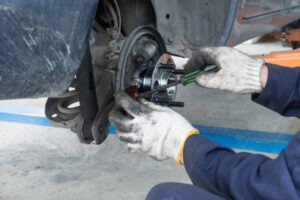
2. Prevention Strategies For Rust:
Particularly in areas with severe weather, callipers are frequently prone to rust and corrosion. By acting as a barrier, anti-corrosion coatings can lessen the chance of deterioration. Maintaining the cleanliness and debris-free condition of the brake parts will help avoid rust and enhance the overall longevity of your braking system.
3. Upkeep Of Brake Fluid:
Brake fluid is essential to the correct operation of brake pedals. Brake fluid contamination over time might result in decreased calliper function. However, brake fluid integrity can be preserved by replenishing it regularly at the recommended intervals, which will guarantee excellent performance from the callipers. This proactive step significantly reduces the likelihood of calliper problems and maintains the efficiency of your braking system.
4. Rotors And Brake Pads Should Be Replaced Timely:
Caliper health is directly impacted by the state of the brake pads, rotors, and combiners. Not only should worn-out rotors be replaced or resurfaced, but brake pads must be changed promptly. This promotes balanced and effective braking by preventing uneven wear on the callipers. If worn-out pads and rotors are neglected, the callipers may be subjected to higher stress and may need to be replaced before scheduled.
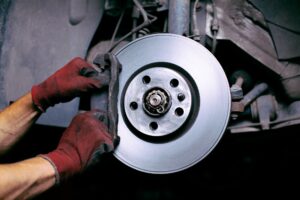
Therefore, maintaining a responsive and dependable braking system is greatly aided by implementing these preventative measures. The lifespan of your brake calipers can be extended, and you and your passengers can drive safely, by implementing routine inspections, rust prevention techniques, braking fluid maintenance, and prompt replacement of related components.
How Much To Replace Brake Calipers?
A car’s brake calliper replacement cost might vary based on a number of factors. You should budget between $300 and $800 for a full set of brake callipers. It’s crucial to remember that this estimate may change depending on your car’s make and model as well as the calibre of the new brake pads. Compared to aftermarket callipers, the cost of original equipment manufacturer (OEM) callipers, which are built by the same company that made your automobile, may be greater. Although they are often less expensive, aftermarket options can nonetheless deliver dependable performance.
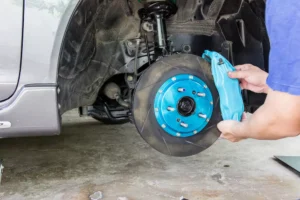
Another factor to take into account is labour expenses because replacing brake callipers requires removing and reassembling various braking system components. Obtaining labour quotes from many sources is advisable because labour costs range between locations and auto repair shops. Moreover, the total cost may increase if additional braking parts, like brake pads or rotors, also require replacement. The effectiveness and safety of your car’s braking system depend heavily on prompt replacement of brake components and routine maintenance. It’s wise to speak with a reliable mechanic before starting any replacement in order to receive a more precise estimate based on your particular car and its particular needs.
Conclusion:
In conclusion, upgrading a car’s brake callipers can be expensive. However, doing so is an investment in both performance and safety. Knowing typical causes, such as wear and corrosion, enables car owners to take quick action to resolve problems. Although do-it-yourselfers are capable of handling certain jobs, expert help guarantees correct installation. Caliper lifetime is influenced by routine maintenance, including cleaning and lubrication. Recall that the guarantee of a dependable braking system outweighs the cost of replacement. If you’re wondering how much to replace brake callipers. Then, refer to this article. Budget sensibly, prioritize safety, and maintain up-to-date knowledge on this crucial component of auto maintenance. Not only can a well-maintained brake system save money, but it also contributes to driving comfort.
